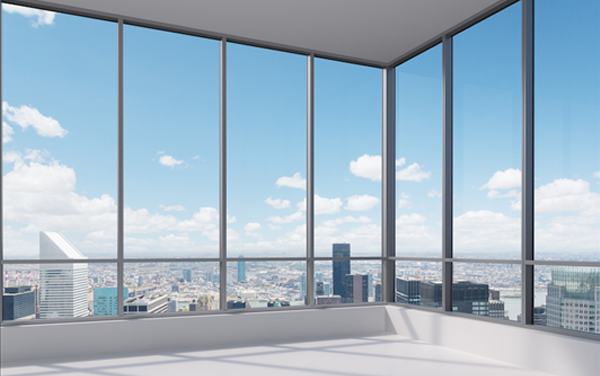Understanding How Glass is Fire-Rated
When it comes to keeping a building’s occupants safe, the materials used in the building’s construction can play a crucial role in fire safety. The glass in standard windows will break when the temperature exceeds 250 degrees Fahrenheit. A broken window allows oxygen into a space, fueling a fire and causing it to expand.
A material that dramatically reduces the destructive path of fire is fire-rated glass. Fire-rated glass is a specially rated type of glass that has been engineered to prevent or minimize the spread of smoke and fire. Our glass fabrication experts at Northwestern Glass Fab have put together this guide to explain the basics of fire-rated glass.
Fire rating determines a product’s ability to withstand:
- Flames
- Radiant temperature
- Thermal impact
Understanding Fire-Rated Glass
In the event of a house or building fire, temperatures can quickly exceed 1,000 degrees Fahrenheit. Fire-rated glass is designed specifically to withstand high temperatures. Fire-rated glass is put through a litany of tests run by independent laboratories to become certified as fire-rated.
These tests determine the length of time a specialty glass can withstand extreme heat and fire. The assigned rating will reflect the length of time the glass was able to withstand flames. For example, a fire-rated product with a 20-minute rating is able to withstand 20 minutes of fire and smoke. When determining what type of rating is required, always follow the codes required by the local city or county in your area.
Impact Testing in Fire-Rated Glass
A key factor in fire-rated glass is its impact rating. Fire-rated glass is impact-tested to determine how glass that has been heated by high temperatures from a fire will react to the stream of a fire hose or sprinkler.
Typically, standard glass cannot withstand the thermal impact of water and fire. Understanding a product’s impact rating is critical in evaluating the integrity of glass. The hose stream test is mandatory for any fire ratings of more than 20 minutes in the United States. There are three main types of fire-rated glass:
- Wired Glass
Perhaps the most common fire-rated glass product is wire glass. Wire glass is inlaid with wire. It has been around for more than a century and was common in high-occupancy public institutions such as schools and government facilities. It can withstand thermal shock and can be used in doors or sidelights as long as a safety film is applied to the glass. Wire glass does have the most limitations for sizing and fire ratings available.
Wired glass is inexpensive, but its industrial look can be a bit of a drawback. It boasts a fire rating but a low impact safety resistance. A protective film must be applied to meet glazing safety codes where necessary.
- Glass Ceramic
Unlike wired glass, ceramic glass offers a greater design capability since it looks almost like regular glass. This product is also rated for fire and impact and is frequently used in doors, windows, and borrowed lite assemblies.
Filmed or laminated versions make this product not only great for fire rated situations but also meeting standard safety glazing codes. Glass ceramic is able to withstand extremely high thermal impacts such as the water from a fire hose or a fast-moving adult. Because of this, it receives the highest available standard impact rating.
Custom Glass Fabrication & Manufacturing
At Northwestern Glass Fab, our team of custom glass fabrication experts understands the importance of supplying specialty glass products that can withstand high heat and impact. We take pride in our work with high-quality fire-rated glass, insulated glass, mirrors, safety glass, and more.
We are the custom glass fabricator with a strong commitment to excellence, superior technology, and expert glass fabrication technicians. To find out more about our products, contact us at 763-762-1750, or you can message us at sales@bringlass.com.




